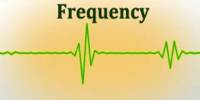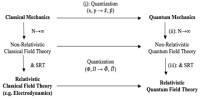Binary zeros and ones have been associated with computers for many years. A team at the University of Innsbruck in Austria has now developed a quantum computer that defies this paradigm and makes use of additional computing capabilities that are now locked away in practically all quantum devices.
Computers use binary information, often known as zeros and ones, which is something we all quickly learn. It is difficult to envision life without computers because of how well this strategy has worked to power everything from coffee makers to self-driving automobiles.
Building on this achievement, binary information processing is now a primary consideration in the construction of modern quantum computers.
“The building blocks of quantum computers, however, are more than just zeros and ones,” explains Martin Ringbauer, an experimental physicist from Innsbruck, Austria. “Restricting them to binary systems prevents these devices from living up to their true potential.”
With the creation of a quantum computer that can do any calculation using so-called quantum digits (qudits), a team led by Thomas Monz at the Department of Experimental Physics at the University of Innsbruck has now achieved greater computational capacity with fewer quantum particles.
Quantum systems are different
Though it is not the most effective method of performing calculations, storing information as zeros and ones is the most straightforward. Binary information has emerged as the undisputed industry standard for traditional computers because it is frequently simple while still being dependable and error-resistant.
The building blocks of quantum computers, however, are more than just zeros and ones. Restricting them to binary systems prevents these devices from living up to their true potential.
Martin Ringbauer
In the quantum realm, things are very different. For instance, information is kept in individual trapped Calcium atoms in the Innsbruck quantum computer.
These atoms naturally exist in eight distinct states, only two of which are generally employed to store information. In actuality, the vast majority of current quantum computers have access to more quantum states than they actually use for processing.
A natural approach for hardware and software
The Innsbruck physicists have now created a quantum computer that can utilize all of the capabilities of these atoms through qubit-based computation. Using more states does not make the computer less dependable, in contrast to the conventional scenario.
“Quantum systems naturally have more than just two states and we showed that we can control them all equally well,” says Thomas Monz.
On the other hand, many problems in physics, chemistry, or material science that require quantum computers are also naturally represented in the qudit language. For today’s quantum computers, rewriting them for qubits can frequently make them excessively sophisticated.
“Working with more than zeros and ones is very natural, not only for the quantum computer but also for its applications, allowing us to unlock the true potential of quantum systems,” explains Martin Ringbauer.
















